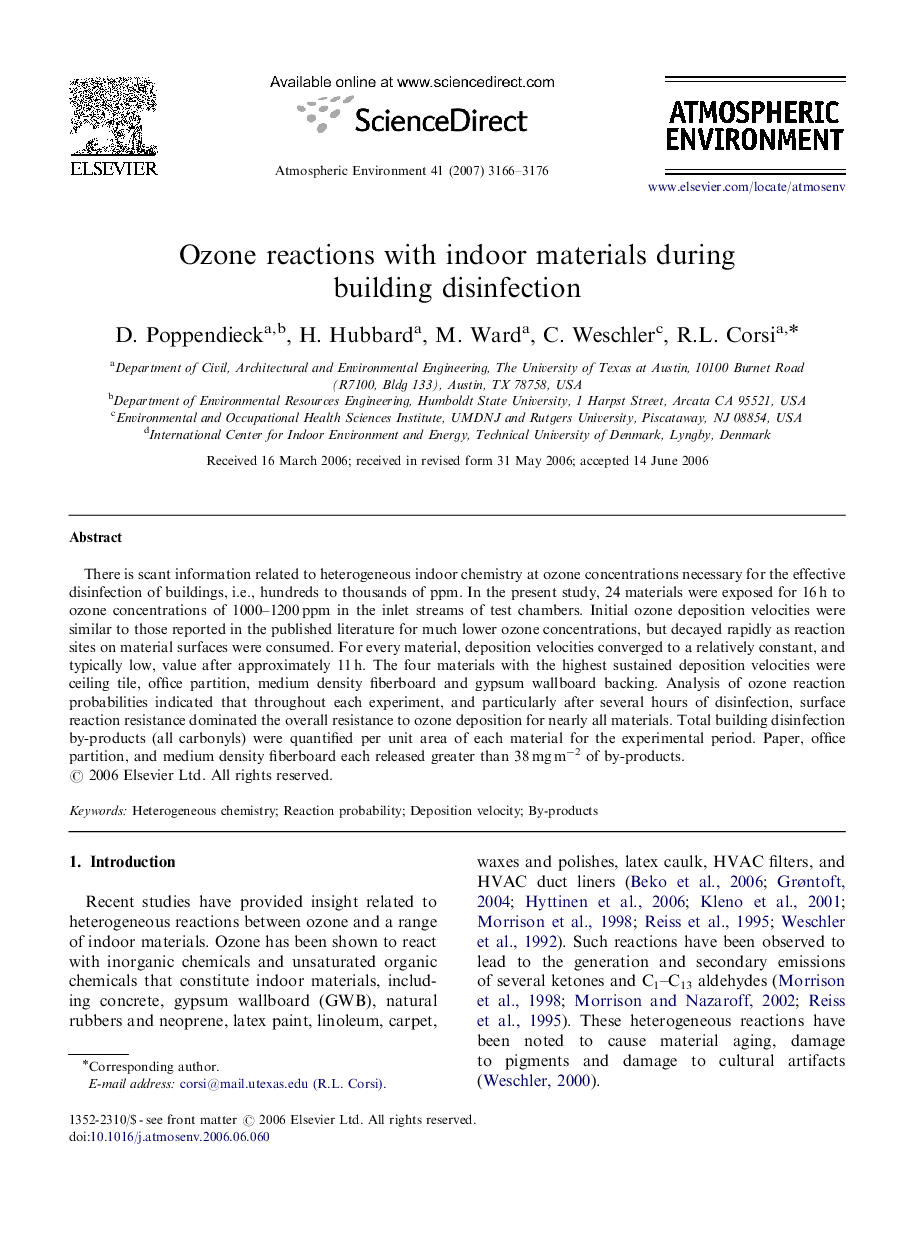| Article ID | Journal | Published Year | Pages | File Type |
|---|---|---|---|---|
| 4442811 | Atmospheric Environment | 2007 | 11 Pages |
There is scant information related to heterogeneous indoor chemistry at ozone concentrations necessary for the effective disinfection of buildings, i.e., hundreds to thousands of ppm. In the present study, 24 materials were exposed for 16 h to ozone concentrations of 1000–1200 ppm in the inlet streams of test chambers. Initial ozone deposition velocities were similar to those reported in the published literature for much lower ozone concentrations, but decayed rapidly as reaction sites on material surfaces were consumed. For every material, deposition velocities converged to a relatively constant, and typically low, value after approximately 11 h. The four materials with the highest sustained deposition velocities were ceiling tile, office partition, medium density fiberboard and gypsum wallboard backing. Analysis of ozone reaction probabilities indicated that throughout each experiment, and particularly after several hours of disinfection, surface reaction resistance dominated the overall resistance to ozone deposition for nearly all materials. Total building disinfection by-products (all carbonyls) were quantified per unit area of each material for the experimental period. Paper, office partition, and medium density fiberboard each released greater than 38 mg m−2 of by-products.
